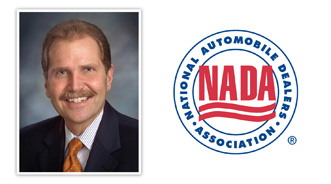NADA: Factory-Mandated Dealership Renovation Programs Must Be Fair, Reasonable and Flexible

There is great and very understandable angst among dealers over automaker programs that require expensive dealership renovations, especially when they appear arbitrary and do nothing to sell more cars or satisfy customers.
The National Automobile Dealers Association helped elevate the current national debate over manufacturer-mandated facility upgrades by commissioning the first-ever facility study.
The study was conducted by Glenn Mercer, a former McKinsey and Co. partner and industry consultant, who interviewed a broad range of industry participants. The study, which was independent and fact-based, uncovered three types of store upgrades:
(1) Expansion – adding a showroom or service bays to support growth in units in operation, for example. Here the study found that unreasonably high and frequently changing OEM volume forecasts, as well as outdated capacity formulas, can lead to overbuilding and waste. Better, more reasonable forecasting is needed to make expansion investments more tailored and worthy of dealer support.
(2) Modernization – upgrading facilities to contemporary standards in tile, furniture, fixtures, etc. The study showed that many dealers are skeptical of the need to invest such large sums of money because there is an absence of clear, quantified return on investment data. The study asks manufacturers for more competition among vendors and more flexibility in OEM design standards, which would benefit automakers and dealers alike.
(3) Standardization – designing the interior and exterior look to ensure that every store selling a given brand looks as much like the other stores as possible. This is the most contentious issue, and while highly standardized facilities make sense when customers move around a lot and are looking for their favorite brand — such as hotels or fast-food places — neither condition applies in automotive retailing.
Automaker attempts to homogenize the look of dealerships can be counterproductive. The local market, the local culture and the local relations between dealers and their customers are more important than a uniform look.
That’s why the study strongly recommends that each OEM and its dealers think through the specific links between standardized appearance, car sales and customer satisfaction. This is especially true today, when so many communities are using local zoning authority to push back against such uniform looks.
Manufacturers that have not already done so ought to consider establishing facility committees — similar in rigor and requirements to product committees — within their dealer council structures. This could help head off facility value cost issues before they are — literally — cast in concrete.
NADA has presented the study’s findings in face-to-face meetings with a number of manufacturers.
Some have indicated they plan to be more flexible. Others say they will do a better job of communicating with their dealers. And still others say they plan to reevaluate their image programs based on the study.
NADA will continue to stress to the OEMs that any image programs must be fair and reasonable and must have the flexibility to accommodate local conditions and resource constraints.
The complete study is available at www.nada.org/facilitystudy.


